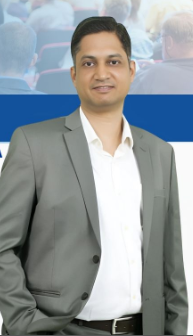
“Skilled labour shortages are very real for us”, says Neel Bhadra Mani, Head – Purchasing & Supplier Quality Development (SQD), KSPG Automotive India Pvt Ltd., in conversation with Neha Basudkar Ghate.
What are the major trends you see shaping the automotive tooling sector today?
The automotive sector today is completely driven by time and cost pressures. Precision and quality are now taken as given, nobody even discusses it, because it’s an understood requirement that if I give you a drawing, you will meet all those specifications. The real differentiators now are speed, efficiency, agility, and repeatability. The industry is looking for who can deliver faster, who can do it more cost‑efficiently, and who can do it consistently at scale. That is becoming more and more important.
What challenges do you face when localizing parts compared to using overseas suppliers?
When we localize some parts, for a certain period we still continue sourcing the same parts from overseas suppliers. The issue is that the localized and imported components never match perfectly with each other, which makes ensuring consistency a complex task. In terms of quality, we are almost there and can match international standards, but it takes us more iterations and more time to achieve the same results. That’s the real challenge.
Why does it take more time and iterations for Indian suppliers compared to overseas players?
The main reason is experience. Overseas suppliers have been doing this for many years, in some cases 10–15 years or more because their industries have always demanded high‑precision parts. Over time, they have built expertise, refined their techniques, and evolved processes that give them speed and consistency. We are still building this expertise. While we are reaching the required precision, it naturally takes us more time and more iterations until we build the same maturity in processes.
Skilled labour shortages are being felt across industries. How do you see this in the tooling sector?
Yes, skilled labour shortages are very real for us. Many young people are drawn towards industries like IT or ITES, which are seen as more ‘fancy’ or aspirational. As a result, the tooling sector often struggles to attract fresh talent. To change this, we need to make tooling itself more attractive. Institutions and industry bodies should take the lead by running roadshows, tech shows, and industry outreach to create awareness. Students need to see that this is also a lucrative, future‑proof career where they can build a strong path. If we can project the industry better, the youth will be encouraged to join, and that will help close the skill gap.
Why do you think the tooling sector struggles to attract young talent, and what can be done about it?
Frankly, this is a neglected sector. Many young people don’t even know that there is a career path in tooling, so they are not exploring it at all. One reason is that institutes and colleges are sitting in their comfort zones, they assume students will come to them. But the reality is different. Other industries, like IT or even new‑age sectors such as semiconductors, actively advertise themselves. They are visible, aspirational, and constantly reaching out to attract talent.
The tooling sector needs to do the same. Colleges and training institutes should publicize their courses more, run campaigns, and make themselves more visible to students. They should also have strong placement officers who can connect students to real job opportunities and project the sector as exciting and secure. If we can package and showcase it well, the tooling industry can absolutely attract young talent.




COMMENTS